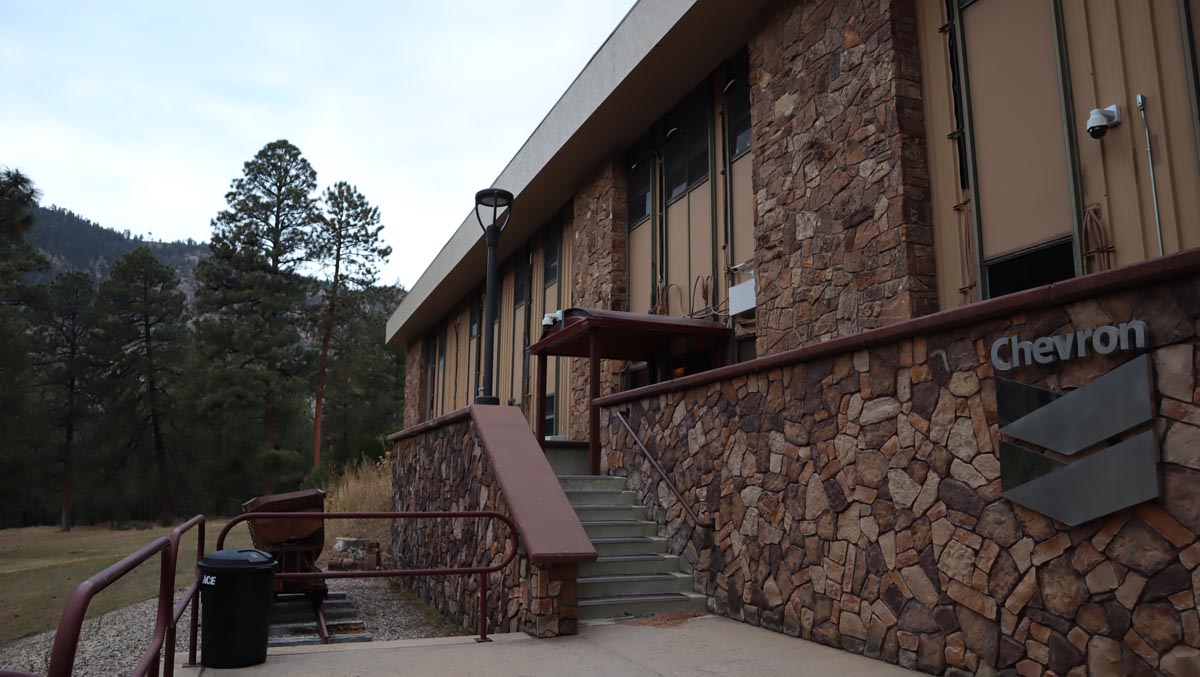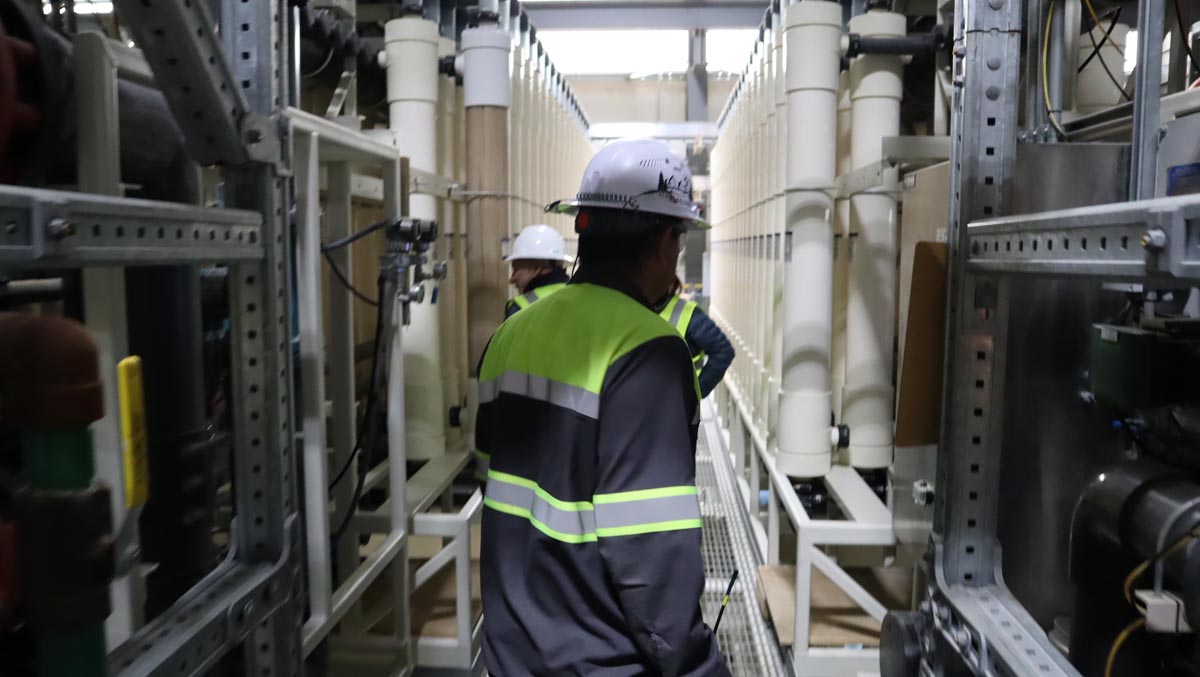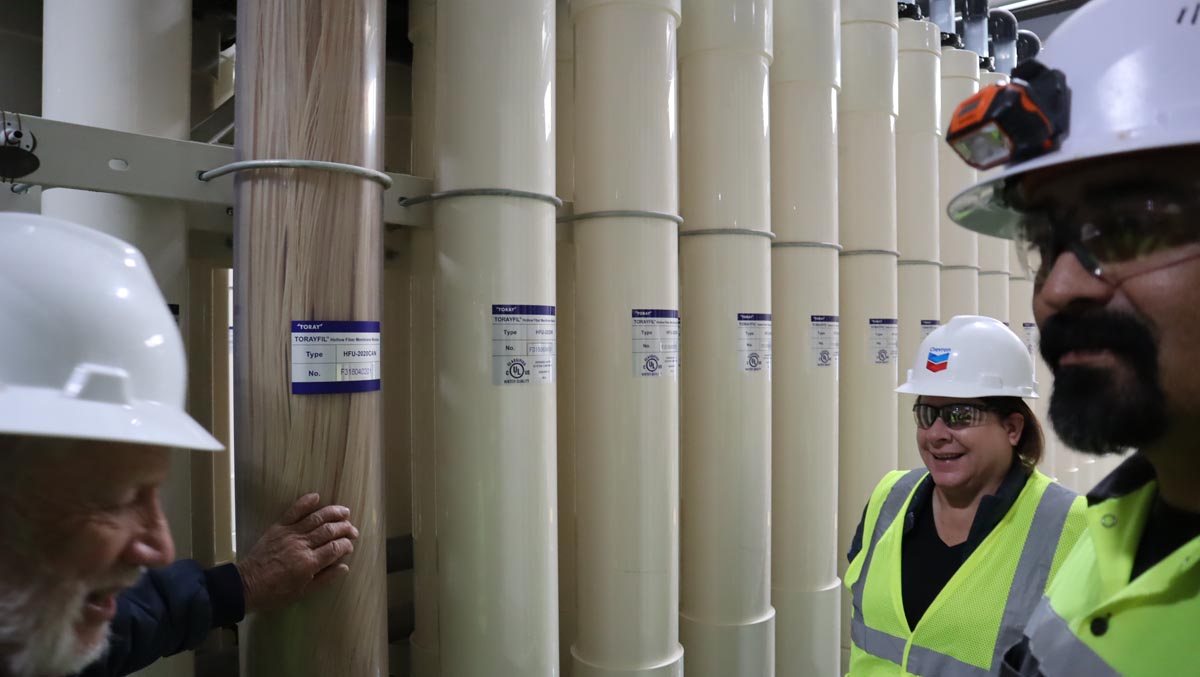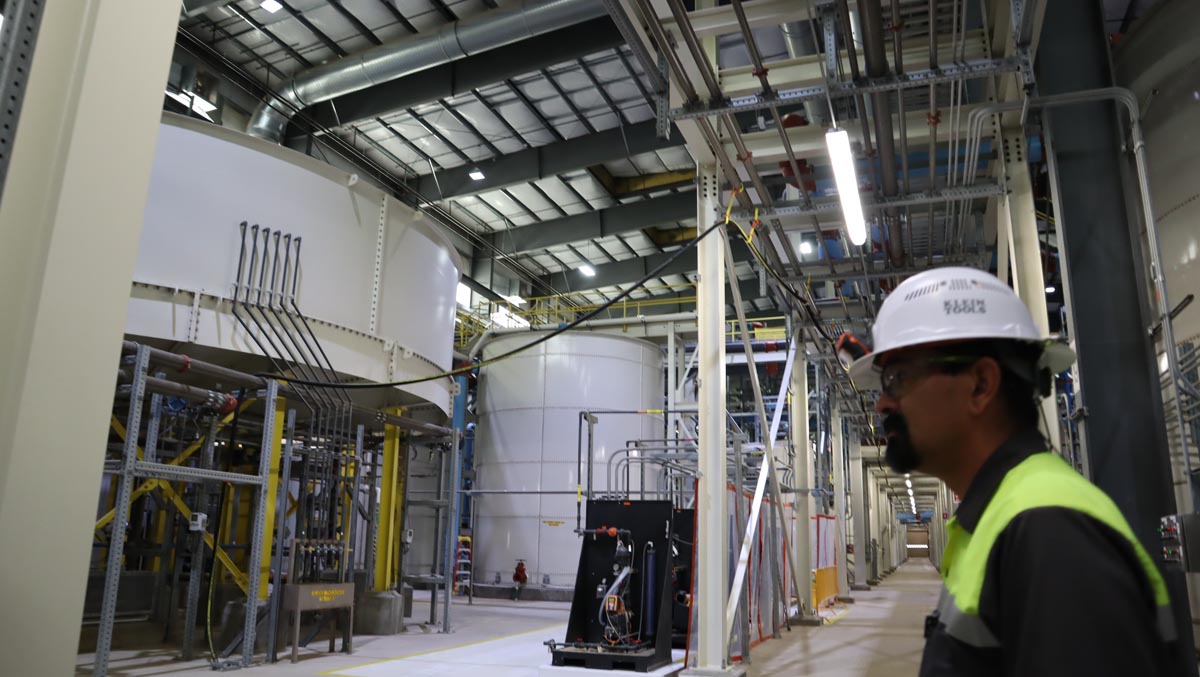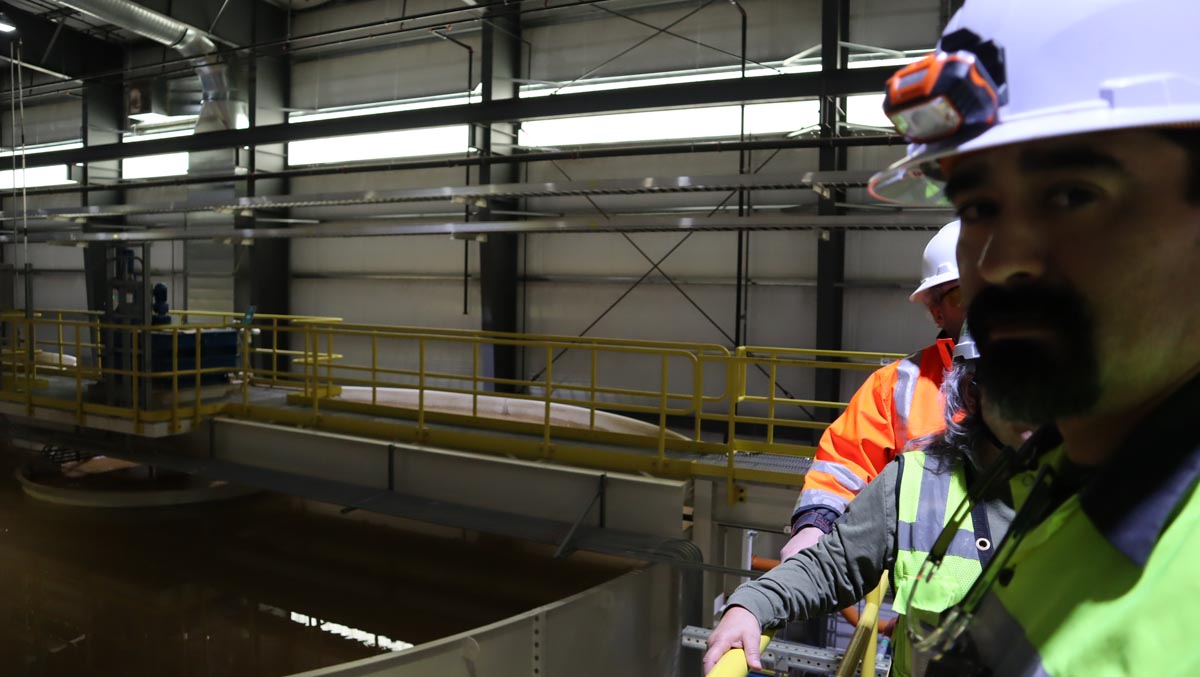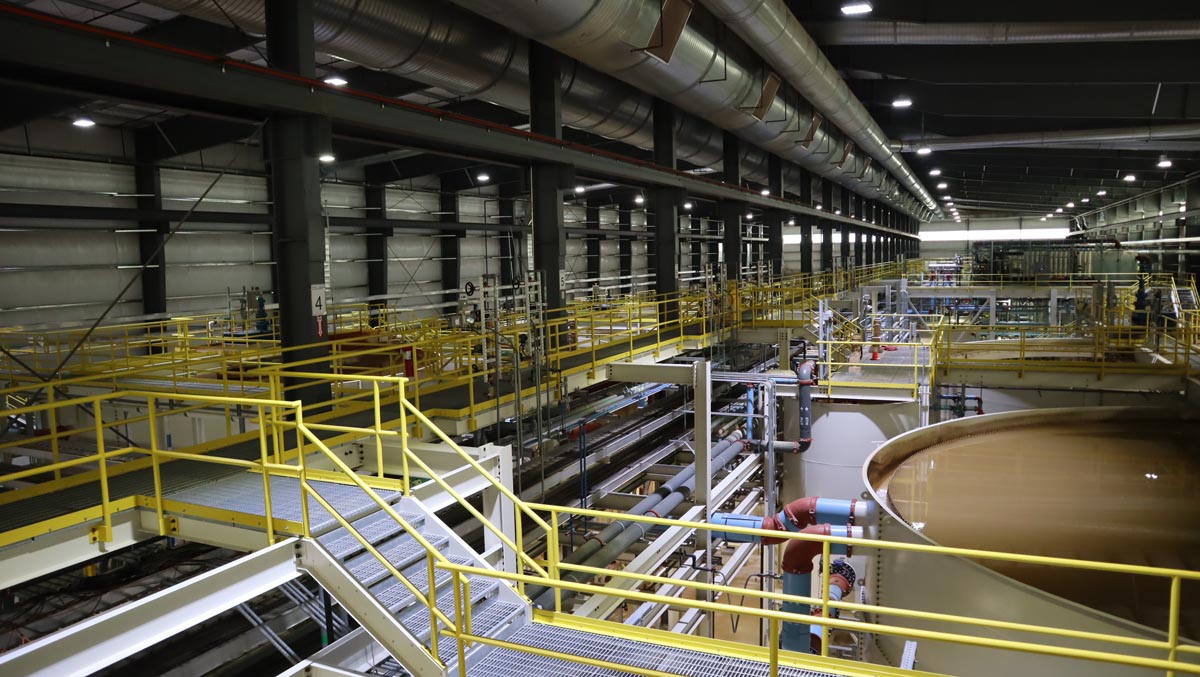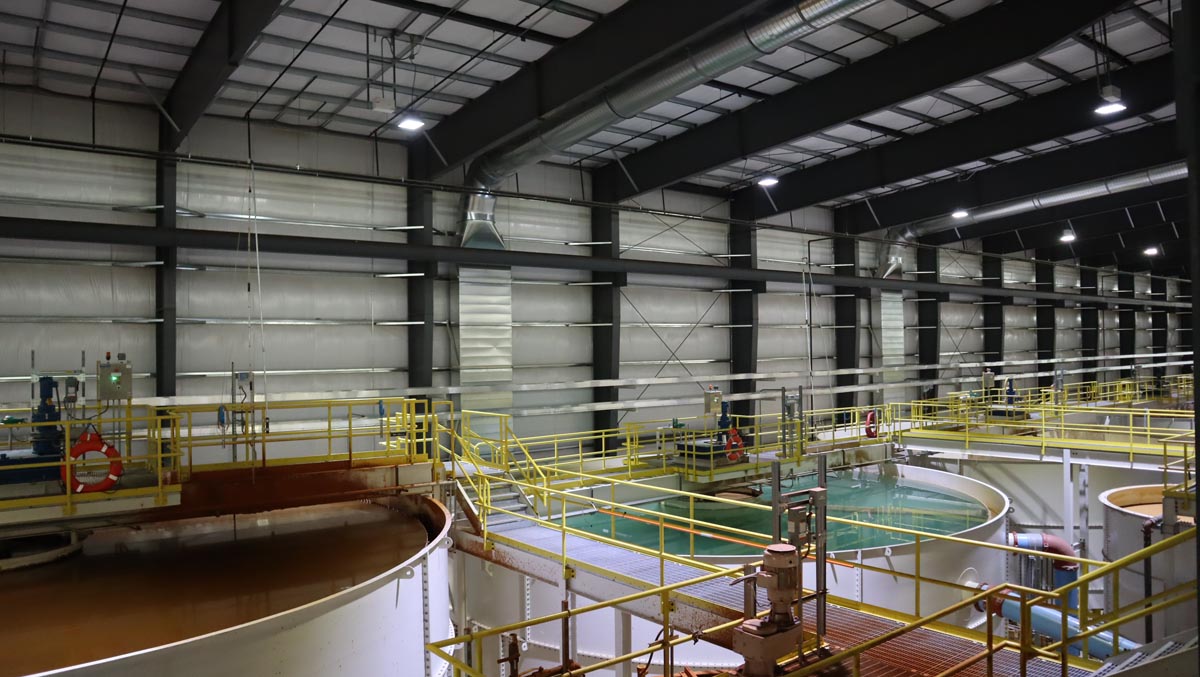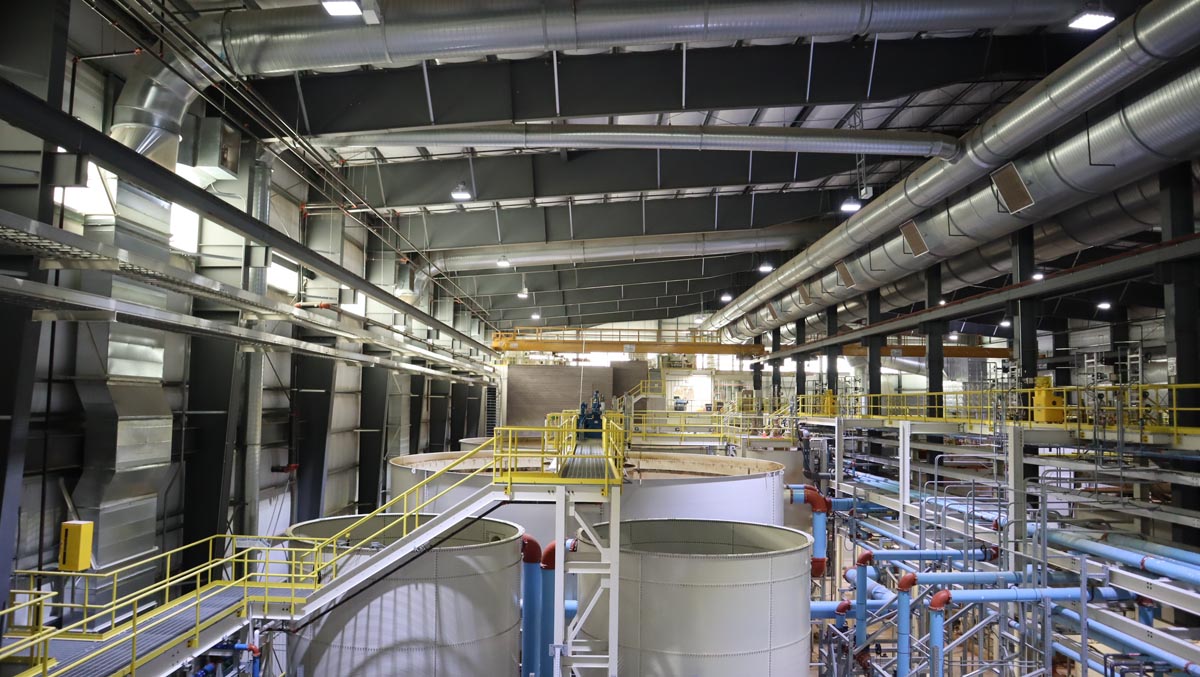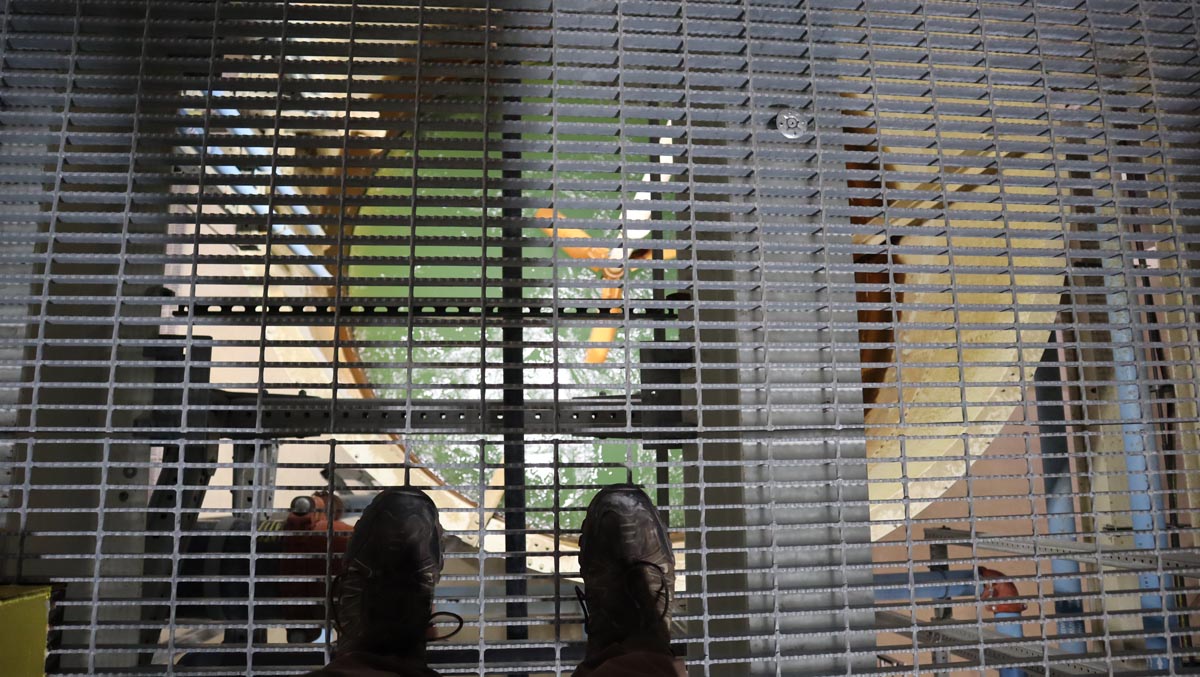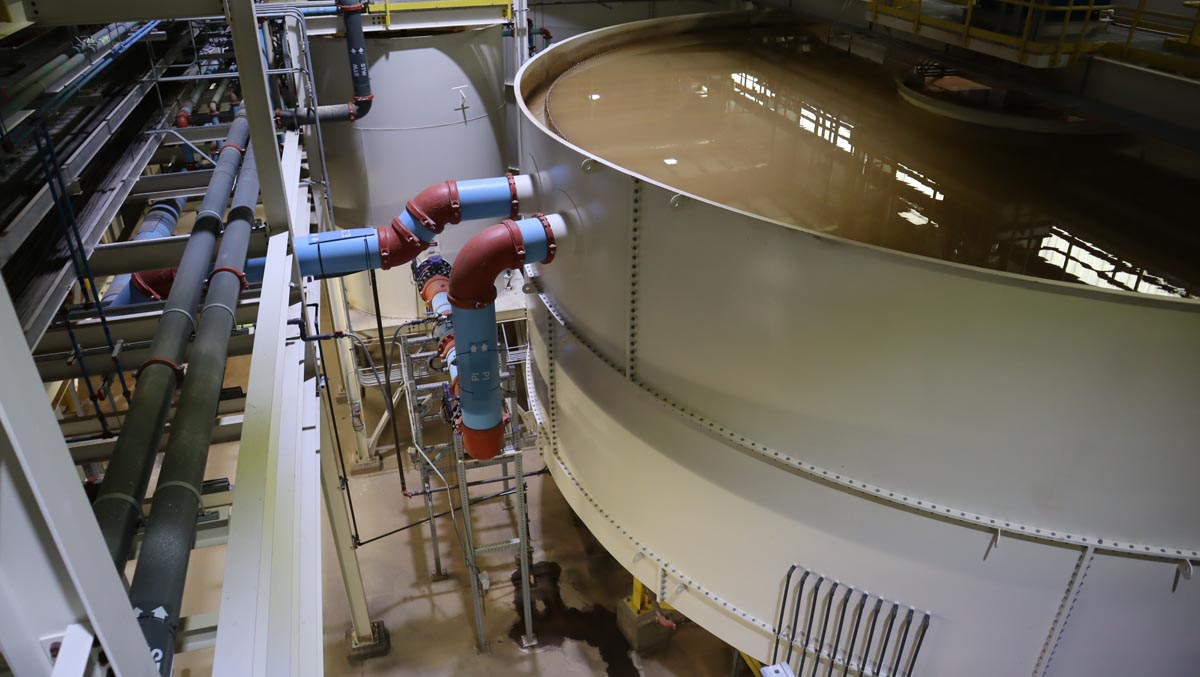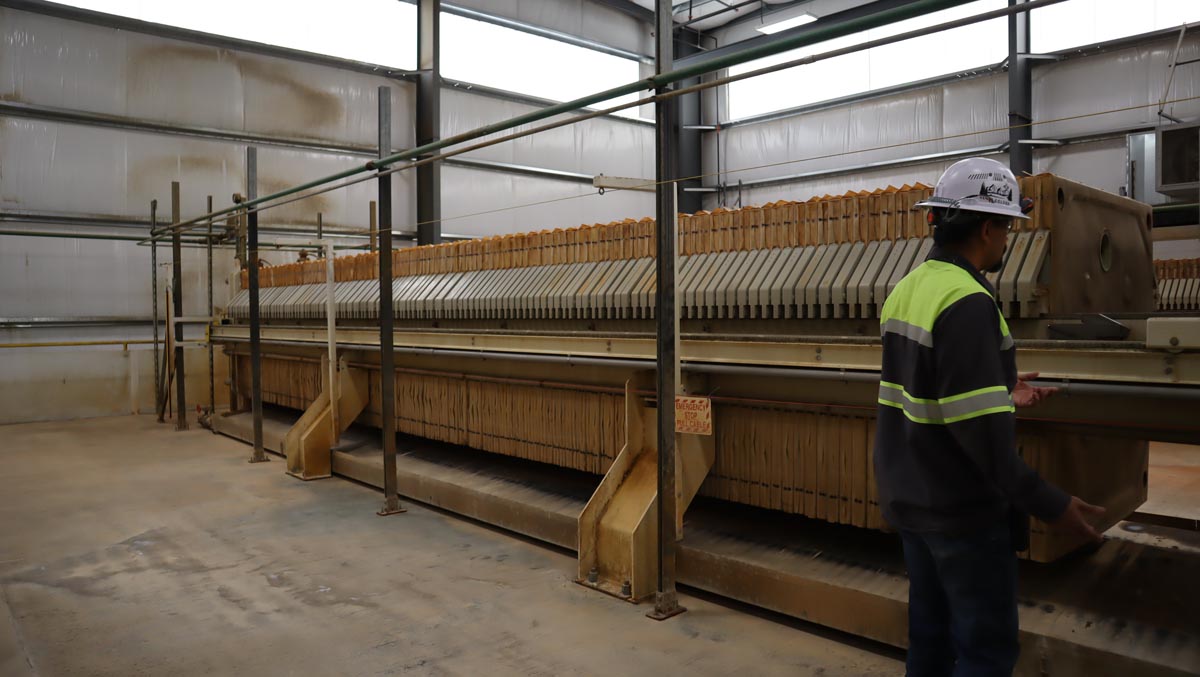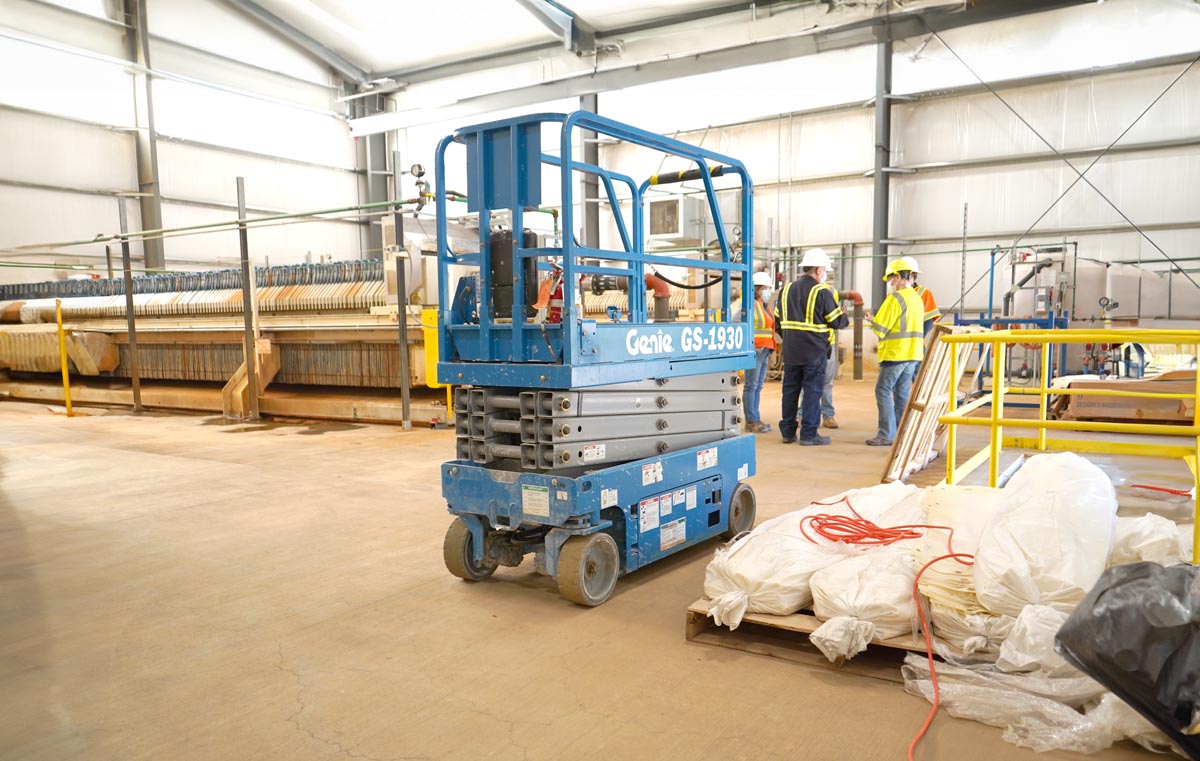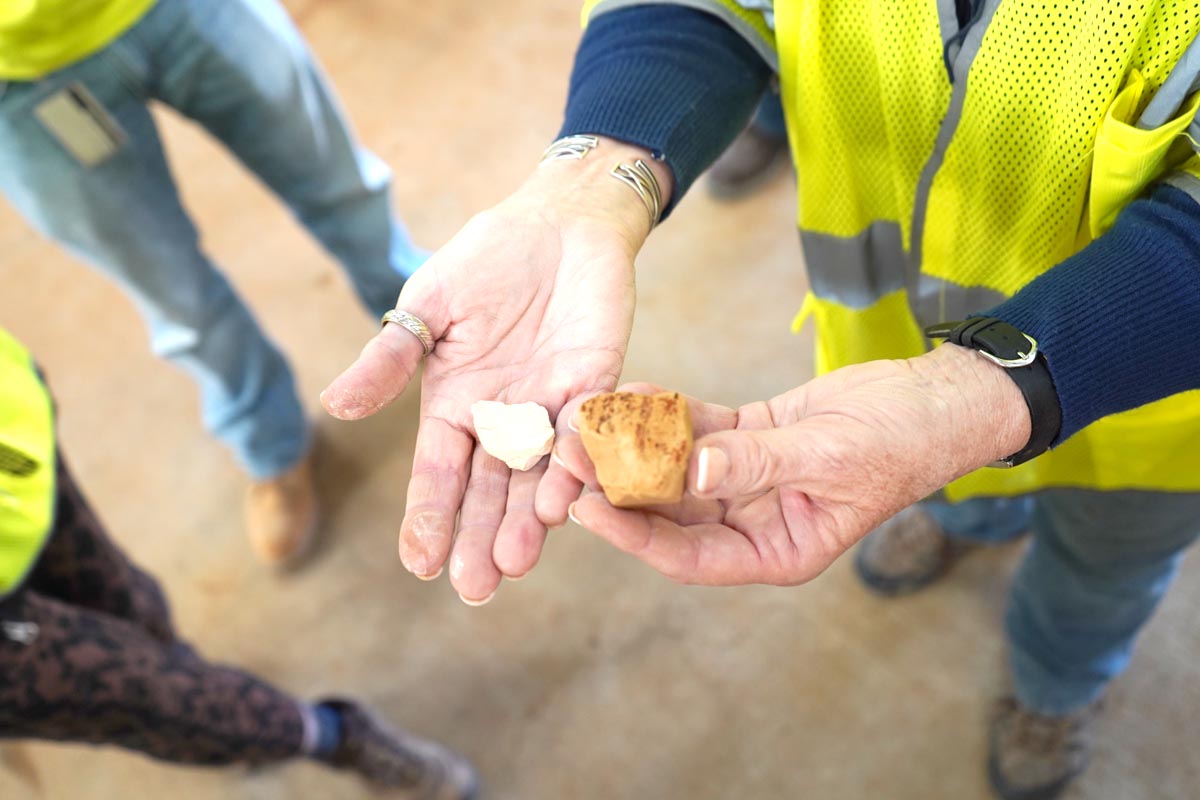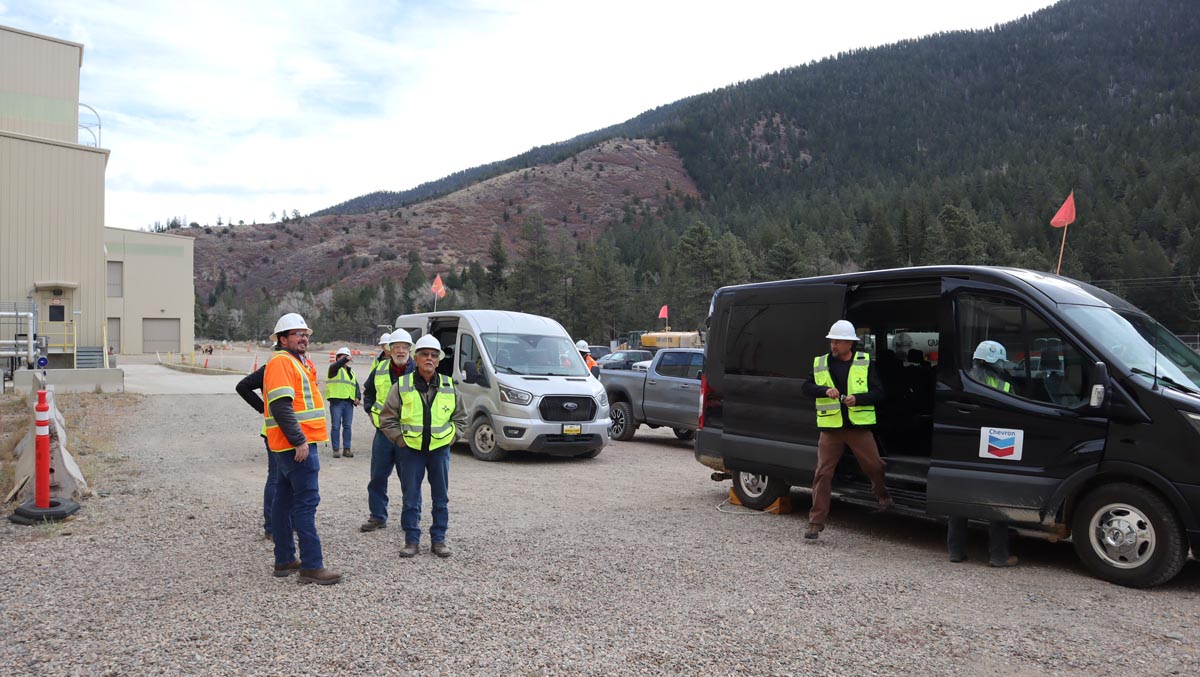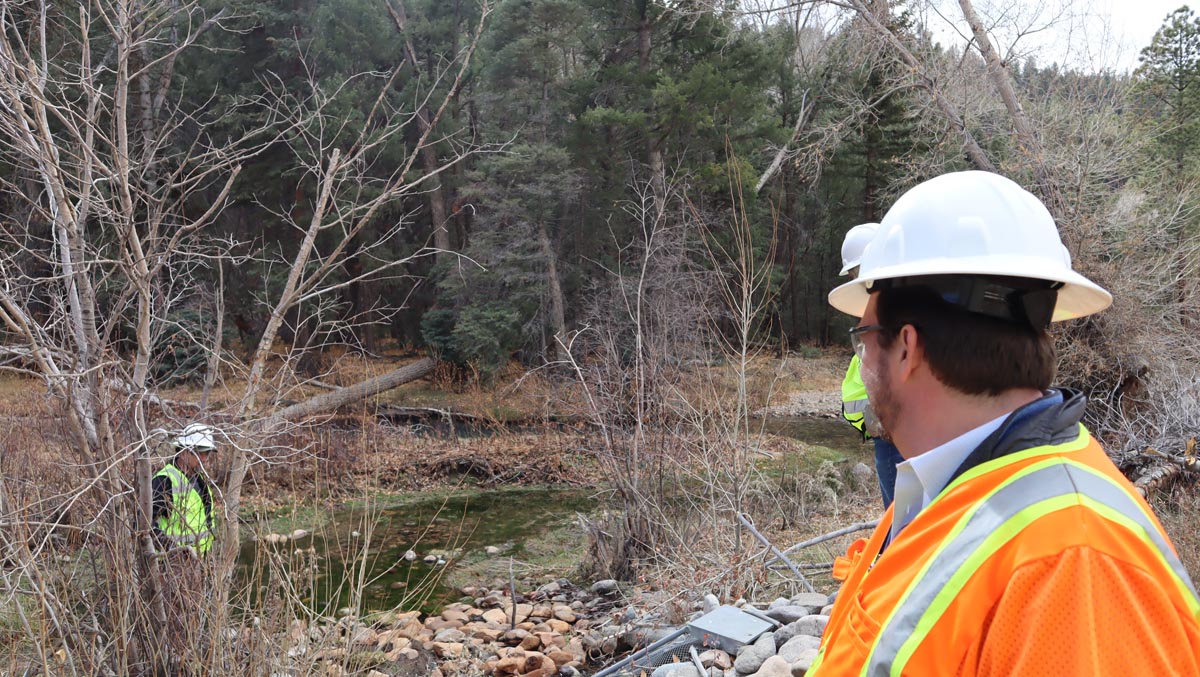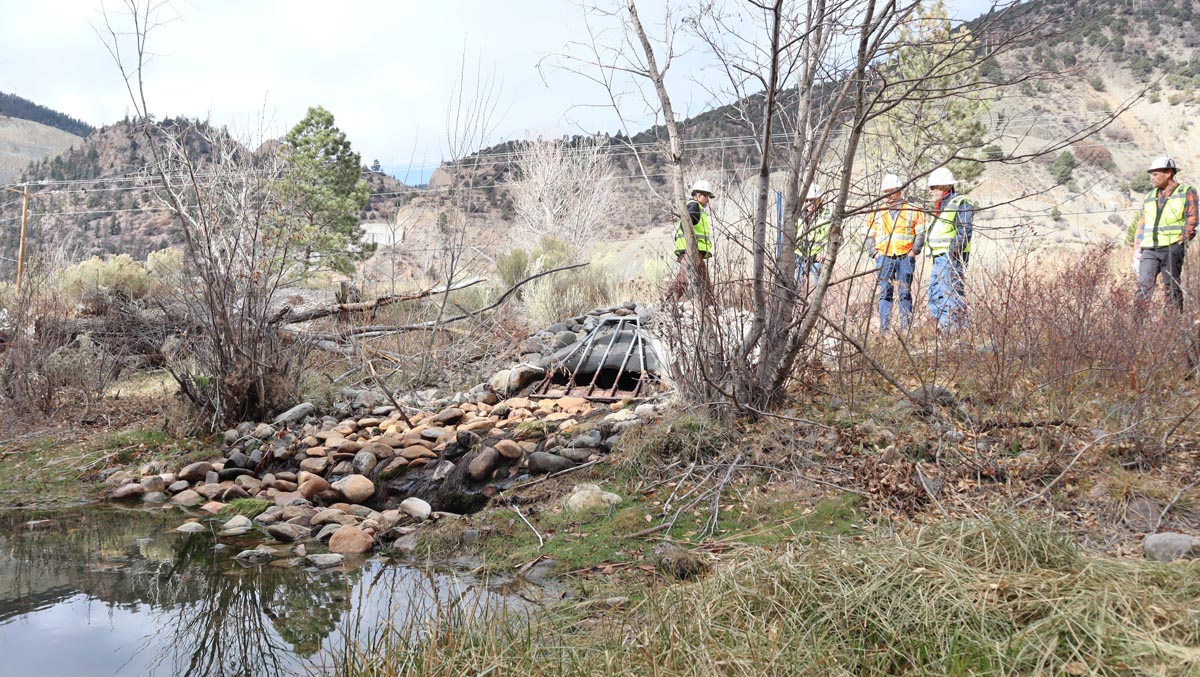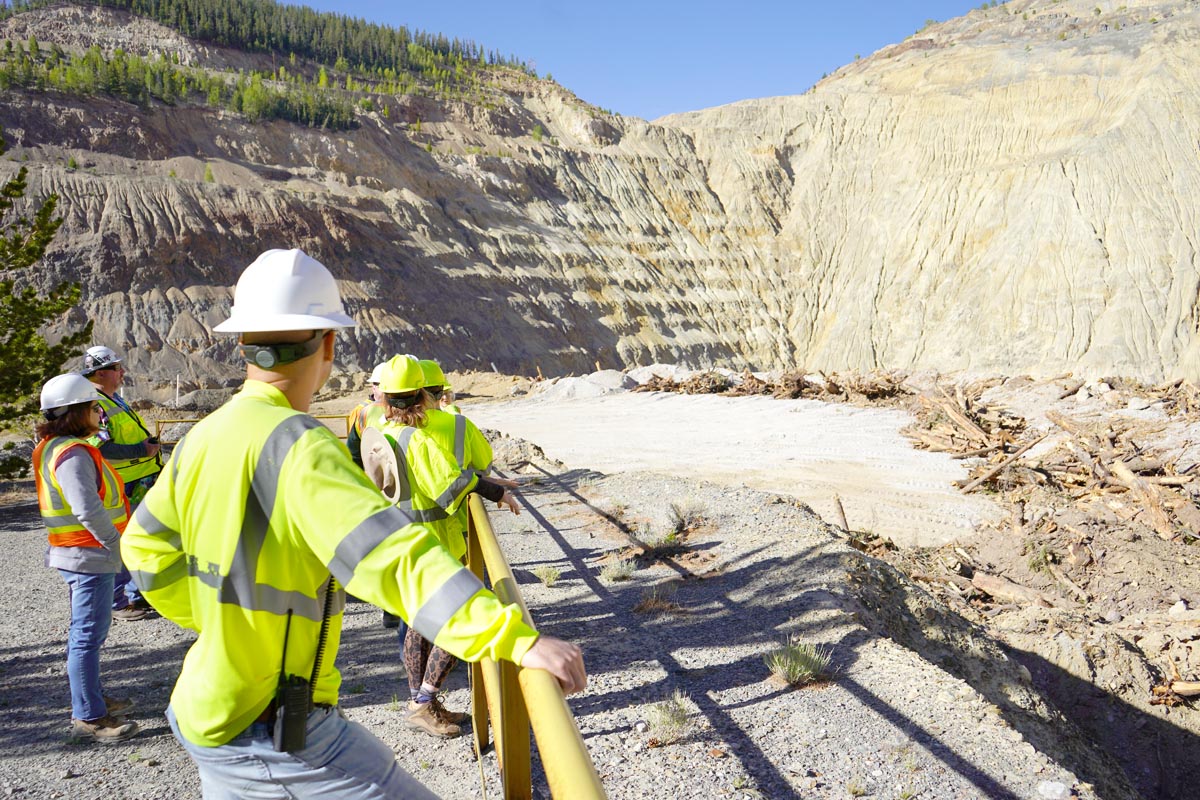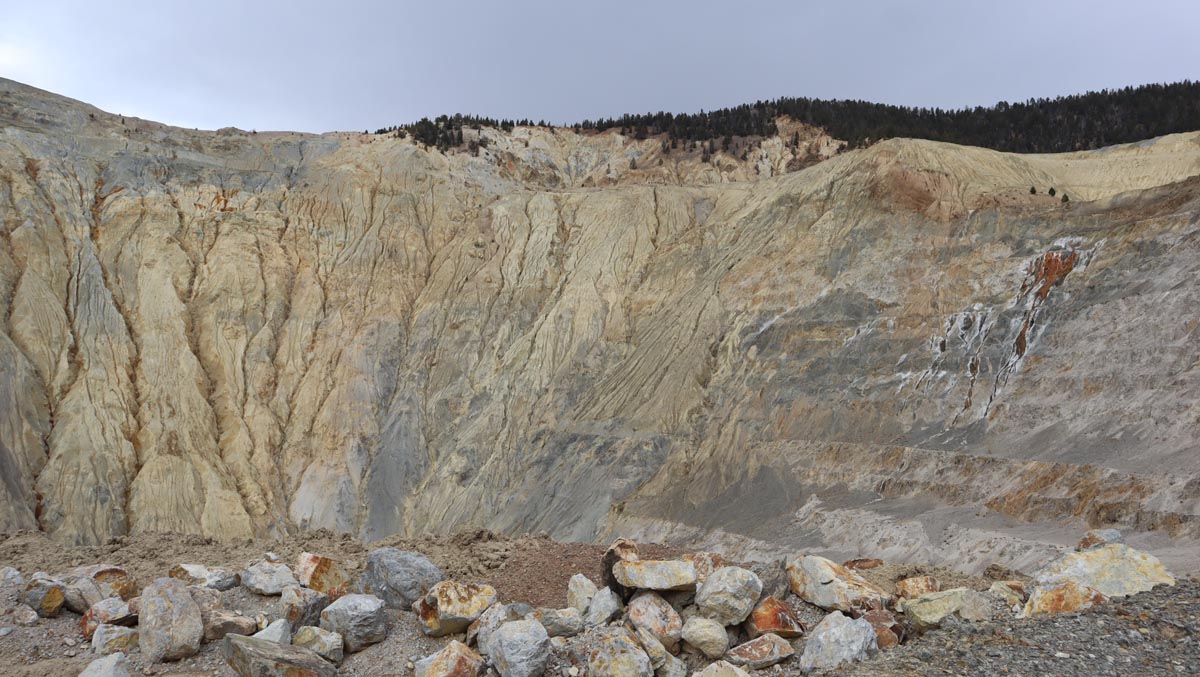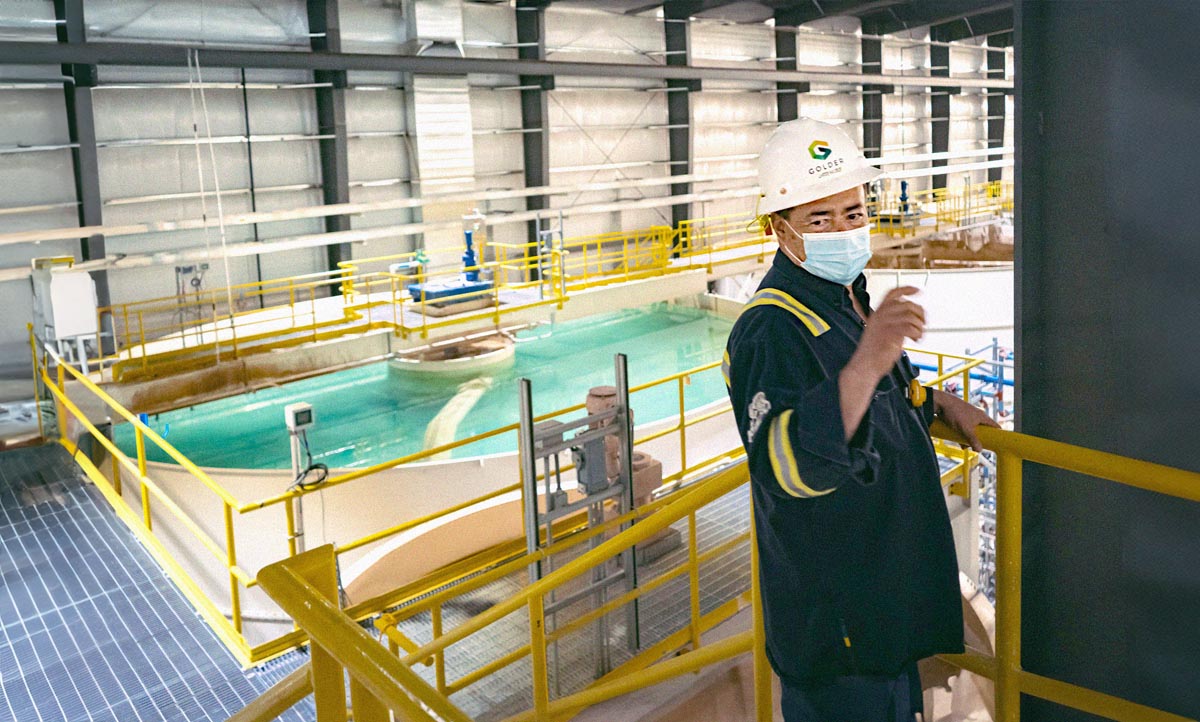Earlier in the year, we covered the ongoing dispute between Chevron and the Office of the State Engineer (NM-OSE), most recently on a bill asking NM-OSE to work with the mine, village, and the QEDF to resolve the water rights issue. The bill was supported by public testimony given by Questa Mayor Ortega, Chevron, Kit Carson Electric Cooperative, QEDF Chair Malaquias Rael, Trout Unlimited, the Llano Community Ditch Association, and local farmers and ranchers. You can read more on this here: Legislation encourages resolution of Questa Mine water rights.
While a resolution with the Office of the State Engineer still has not been reached, progress is being made. Representatives from Chevron held a tour of the molybdenum mine Superfund site on Thursday, November 16, in which the workings of the Superfund program were explained to a group of 10-15 people. Chevron’s Government Affairs Representative Christian Isely was the tour’s host.
The tour began in a boardroom inside the administration building on Goat Hill Road, where Isely showed a mandatory safety video and then delivered a presentation explaining a short history of the mine, who manages the Superfund site today, and how Chevron and other contracting companies like Granite and Archadis (above-ground earth-moving and surveying), Red Tail Surveying, and WSP (water treatment) are handling the reclamation efforts.
Isely wants the community to understand Chevron’s commitment to assisting the Questa area in eventually getting back on its feet and becoming independent from Chevron, which is why Chevron has been working to ensure the NM-OSE recognizes the water rights owned by Chevron, which will ultimately benefit the village and its residents.
“You can have all the funding you need, but if you don’t have the water, you can’t really accomplish any of it,” said Isely.
Water rights are key to environmental remediation and transitioning Questa into a post-mining, low-carbon economy.
“The work that Chevron is doing here is exceeding the requirements put on them by the federal government and the EPA,” said QEDF Chairman Malaquias Rael in the board room. Rael made a passionate defense of Chevron’s efforts to unite the acequias under the area-wide association while underscoring the need for Chevron to get the water rights recognized by the NM-OSE.
Currently, Chevron is advocating for an area-wide acequia association, which would increase the community’s ability to have protections and representation. “No one is protected. We need representation in the state as an association,” Rael continued. “Right now, no one in Questa has a voice, because we’re not in an association.”
John Painter of the El Prado Water Sanitation District was in attendance, and he brought up the topic of a past sale of water rights from Top of the World Farms, in which about 8,000 acre-feet were transferred down south. He hopes that never happens again.
“I think it is extremely important that [our] water stays in the area,” said Painter.
One way that Chevron keeps water rights local is with deed restrictions of up to 75 years on sales and donations. This contractual maneuver stipulates that recipients of water rights cannot move the water outside of a given area.
After the presentation segment of the tour, the group was thinned slightly, and hard hats, reflective vests, and safety glasses were distributed. The tour group then was divided and shuffled into two vans to head up Highway 38 to the water treatment plant. There the group was led by Lead Operator Eloy Montoya.
Inside the water treatment facility, several large tanks were observed to be connected through a series of tubing. Montoya explained the filtration process, where runoff water from the old mine collected in various catches throughout the site is piped into the facility and tubed through several filters that extract metals and impurities from the water. Differing levels of acidity are utilized to extract different metals until the water is brought back to a neutral pH of 7 at the end of the filtration process, according to Montoya.
The tubing is also designed to take advantage of gravity through the different filtration stages, so that while it takes energy to pipe the water into the facility, gravity does the rest. After the water collected from the mine has been filtered and cleaned, it is piped back into the Red River at approximately three acre-feet per day.
As the tour continued up the mountain, the two vans were frequently passed by large earth-moving dump trucks moving up and down the mountain. Crews are working to separate various sediments as well as constructing canals down the mountain to direct any kind of runoff.
